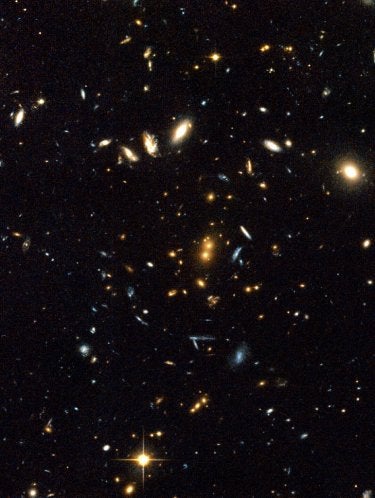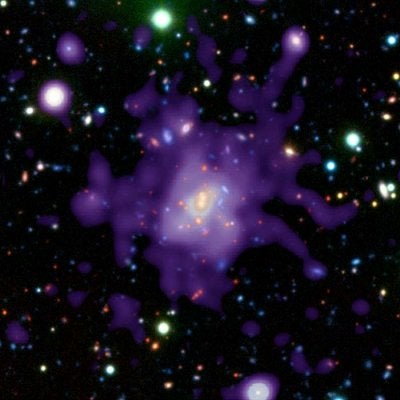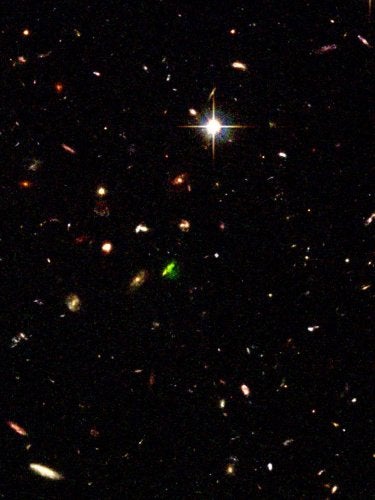In piecing together the story of the universe’s history, scientists are hoping to figure out exactly how and when galaxies first formed. It’s a crucial question because early structure formation carries the imprint of conditions in the newborn universe, which can help us understand our cosmic beginnings. Now, two key discoveries of early galaxy clusters are helping astronomers see the foundations of the universe’s galactic architecture directly.
Using a powerful combination of NASA’s Chandra X-ray Observatory and the Advanced Camera for Surveys (ACS) aboard the Hubble Space Telescope, an international team of astronomers has found and studied two record-breaking ancient galaxy clusters.
The first is a cluster whose light is reaching us from 9 billion years ago, when the universe was a mere 5 billion years old. It’s the most massive known cluster of that epoch, which means it must have been growing for quite some time already — a somewhat surprising result for such an early time in the universe’s youth.
“We determined that the galaxies in this cluster were already about 3 billion years old,” explains astronomer John Blakeslee of Johns Hopkins University, a member of the team. “Thus, these galaxies formed most of their stars about 2 billion years after the Big Bang.”
The second finding is a proto-cluster of embryonic galaxies from a time when the universe was only about 1.5 billion years old. This is the most distant, and therefore earliest, proto-cluster ever found.
“Given that this is a very dense region of the early universe with so many galaxies, it’s quite reasonable to suggest that these galaxies are some of the oldest in the universe,” Blakeslee says of this group. “More importantly, though, we are directly observing the galaxy-cluster formation epoch, and it is in clusters that the oldest galaxies tend to reside.”
Both findings are evidence that galaxies started forming soon after the Big Bang, as slightly denser regions in the primordial universe gravitationally coalesced. That process involved many cosmological factors: the pattern of initial density fluctuations in the universe, the nature of gravity, the expansion rate of the universe, the strength of dark energy, and the abundance of dark matter, to name a few.
Witnessing the sculpting of large-scale structure, then, allows scientists to probe these many mysteries and home in on some details of galaxy formation itself, a complicated process that is still not entirely understood. Having found such ancient clusters at various stages in the process certainly will be helpful in putting all the pieces of the puzzle together.
“It’s part of the quest to understand our origins,” Blakeslee says.












